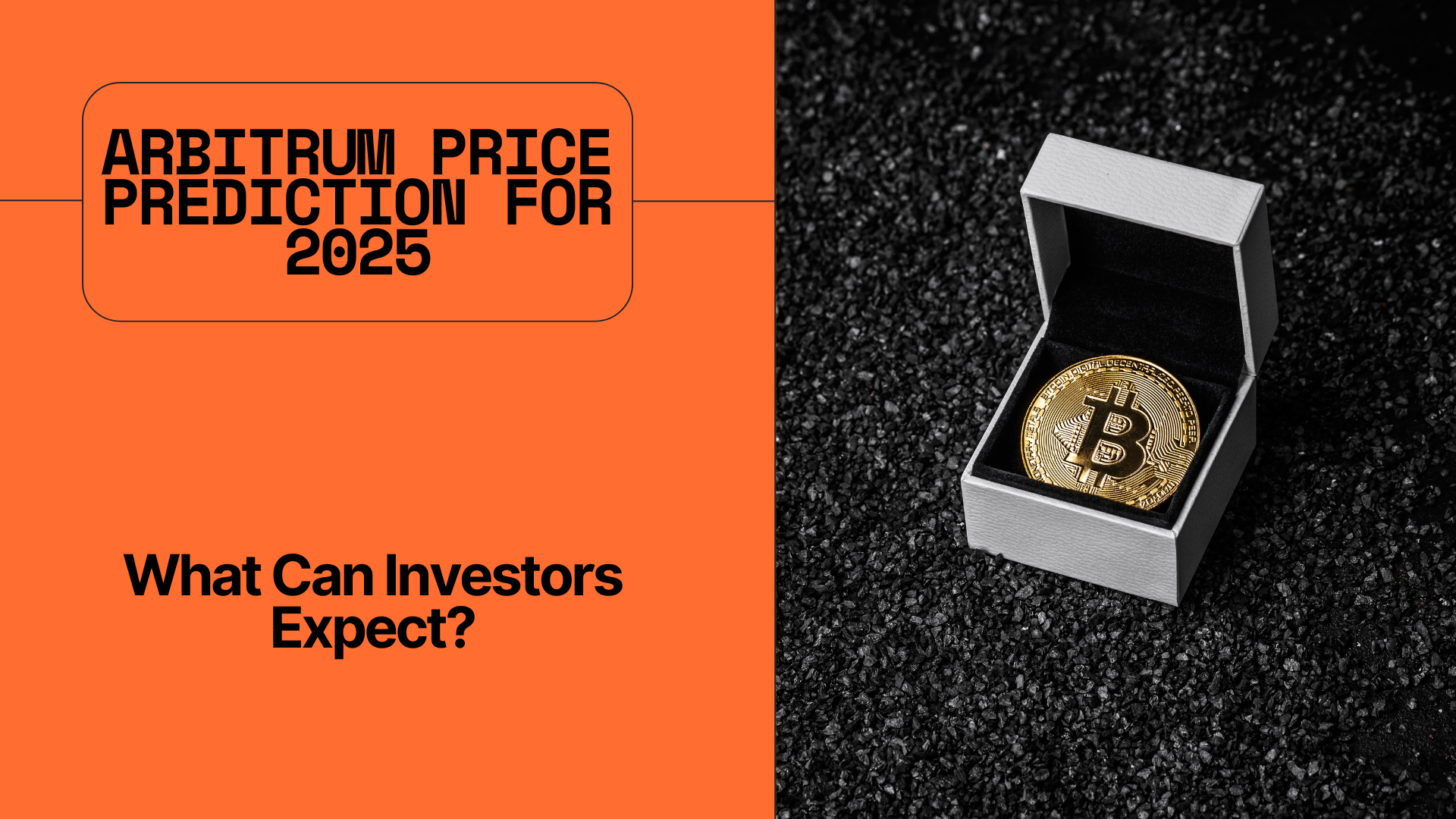
Arbitrum sits among Ethereum’s biggest Layer-2s, benefiting from EVM compatibility and a large developer base. But what might the ARB token do in 2025? Below, we round up what reputable sites actually predict, then connect those numbers to fundamentals like on-chain activity, tech upgrades (Stylus, BOLD), and market structure so you can judge the odds yourself.
Where ARB Stands Today
As of mid-October 2025, ARB trades in the sub-$1 zone with multi-hundred-million daily turnover. For up-to-the-minute price, supply, and markets, check the Arbitrum pages on CoinGecko (live chart, market cap, circulating supply) or similar trackers. These dashboards also show where liquidity concentrates—useful when comparing quotes.
What Others Predict for 2025
Hard price targets from bank research desks are rare for ARB, so most public “predictions” come from quantitative/algorithmic sites. Treat them as indicative bands, not guarantees:
- CoinCodex: projects 2025 trading in a $0.22–$0.32 range (upper target around $0.315). The site updates near-term week-by-week predictions as well.
- Changelly Research (editorial + model blend): for December 2025, suggests ~$0.37–$0.48 with an average near $0.42.
- DigitalCoinPrice (model-driven): its 2025 table shows month-specific bands, with Nov–Dec 2025 capped around ~$0.65–$0.66 in the current view.
The spread between these sources is wide—that’s a signal in itself. It reflects uncertainty about risk appetite, dilution, and Layer-2 competition more than anything “mystical” about ARB.
Drivers That Could Move ARB in 2025
1) Throughput, users, and TVL (a.k.a. “is demand growing?”)
Arbitrum’s adoption is best tracked via L2 analytics: activity, transactions, and value secured. L2BEAT maintains independent dashboards for Layer-2s; Arbitrum consistently features among the top rollups by activity. Sustained use is the backbone for any long-run token thesis.
2) Technology upgrades: Stylus + BOLD
- Stylus lets developers deploy smart contracts in WASM languages (Rust, C/C++) alongside Solidity, a Multi-VM approach that can broaden Arbitrum’s app surface and performance profile. Stylus went live on mainnet in late 2024, with the ecosystem still growing. If developer traction accelerates in 2025, it’s a meaningful catalyst.
- BOLD (Bounded Liquidity Delay) aims for permissionless validation and stronger dispute handling. A constitutional proposal to upgrade Arbitrum One/Nova to BOLD underscores the project’s security path; the docs describe how BOLD enables anyone to become a proposer while improving liveness against delay attacks. If fully implemented, it can deepen the “credible neutrality” story that institutions like.
3) Treasury & DAO mechanics
The Arbitrum DAO actively manages treasury programs and publishes forum reports (token flows, yields, grants). While not a “price lever” on its own, transparent treasury ops can stabilize builder incentives and signal runway during tougher markets—both indirectly supportive for sentiment.
4) Supply overhangs & exchange flows
Periodic unlocks and large transfers to exchanges can pressure price; conversely, net outflows can relieve sell pressure. Community reports periodically flag these flows; use them as context rather than trade signals.
A 2025 Scenario Map
Rather than a single “number,” anchor on scenarios—then watch data that confirms or invalidates them.
Base case — “Range-work” with catalysts:
If Layer-2 usage stays solid and Stylus/BOLD adoption grinds higher, ARB can oscillate in a broad range, broadly consistent with midline model bands (say, ~$0.30–$0.55), punctuated by event-driven spikes (exchange campaigns, ecosystem grants) that fade without follow-through. This sits between CoinCodex’s conservative band and DigitalCoinPrice’s late-2025 upper bounds.
Bull case — “Traction + flows” combine:
If developer activity meaningfully picks up on Stylus (more WASM-native dApps) and the DAO continues funding high-impact programs while L2 activity rises, ARB could press toward the high end of public forecasts (think ~$0.60–$0.66 per DigitalCoinPrice) with overshoots during risk-on windows. Watch L2BEAT activity and Arbitrum blog updates for confirmation.
Bear case — “Dilution + rotation” headwinds:
If unlock-related supply, exchange inflows, or rotation to competing L2s/Base outpace new demand, the market could gravitate toward model lower bounds (e.g., ~$0.22–$0.32 per CoinCodex) until flows stabilize. Signs: rising net CEX inflows, stagnating daily transactions, and muted grant activity.
How These Predictions Fit the Fundamentals
Forecast tables don’t “know” tomorrow’s catalysts. They curve-fit history and volatility. To judge whether ARB can sit above or below those numbers, track:
- Activity momentum (transactions, unique users) on L2 dashboards like L2BEAT. Upticks that persist for weeks usually precede better price behavior.
- Developer traction (Stylus hackathons, grants, shipped apps). The more non-Solidity teams that launch (Rust/C++), the more differentiated Arbitrum becomes. Follow the Arbitrum blog and grant posts.
- Security/neutrality milestones (BOLD roll-out stages). These affect institutional comfort and long-term positioning.
- Treasury transparency (DAO forum token-flow reports). Stable, smart funding can be a soft floor for ecosystem health.
A Practical Plan If You’re Considering ARB
- Use live data, not screenshots. Pull current price and liquidity from CoinGecko and your preferred venue before acting; spreads can vary across exchanges.
- Treat model forecasts as guideposts. The band from ~$0.22 to ~$0.66 across sources gives you a reference range, not destiny. Place your plan in that context.
- Define invalidation. If you’re bullish because Stylus adoption is rising, decide what would prove that wrong(e.g., grant pipelines stall for two months, activity share slips on L2BEAT).
- Mind unlocks/flows. Sudden exchange inflows or vesting events can overwhelm good news; scale position size accordingly.
What Can Investors Expect in 2025?
Putting it together, 2025 looks like a data-driven tug-of-war for ARB:
- Bullish vectors: a deeper dev stack via Stylus (WASM + Solidity), progress toward BOLD permissionless validation, and sustained usage visible on L2BEAT. These strengthen the long-run story and could justify outcomes near the upper public forecasts in risk-on periods.
- Bearish vectors: lingering supply overhangs, exchange inflows during risk-off, and L2 competition. Those would bias ARB toward the lower forecast bands until demand reasserts.
If you want a single, honest takeaway: the consensus cluster among public models puts 2025 somewhere between ~$0.22 and ~$0.66, with the mid-$0.30s to mid-$0.50s a plausible “base case” if usage holds and tech milestones land on schedule. Use that as a planning scaffold, then let real-time adoption and flow data tell you when to lean in—or step back.